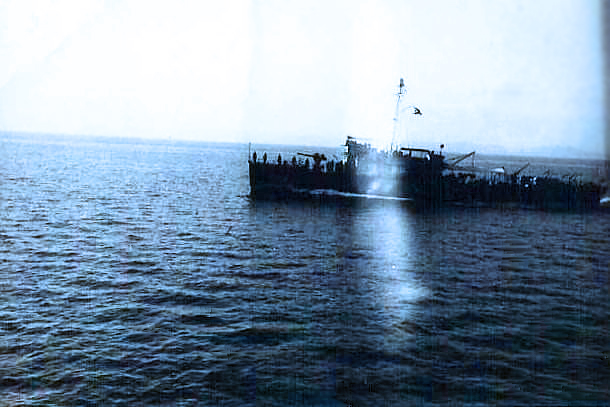INTRODUCTION
After the reconstitution of the Offshore Patrol (OSP) in 1945, a subsequent build up followed with the arrival of former US Coast Guard Lighthouse Tenders by 1947, surplus ships of the United States Navy made its way to the OSP from the Patrol Craft Escorts (PCE), Landing Ship Tanks (LST’s), and Submarine Chasers (SC’s).
Unknown to many, from 1945 to the late 1970’s, the country possessed 23 Submarine Chasers of two Types comprising the 14 SC 110 Type and the 9 SC 173 type. These ships formed the nucleus of our Anti-Submarine Warfare Force. All former USN units with 2 to 3 years of service were provided to the OSP under the US Mutual Defense Assistance Pact or MDAP.
9 units of the SC 173 Type (PC-461 Class):
- RPS Batangas (PS-24)
- RPS Bohol (PS-22)
- RPS Camarines Sur (PS-21)
- RPS Capiz (PS-27)
- RPS Negros Oriental (PS-26)
- RPS Negros Oriental II (Ex-Cambodian Navy) (PS-26)
- RPS Nueva Ecija (PS-25)
- RPS Nueva Vizcaya (PS-80)
- RPS Zamboanga Del Sur (PS-23)
SPECIFICATIONS and ARMAMENTS
They have a top speed of 22 knots, armed with a 3inch/50, 1-40mm, 5x20mm guns, 2 K-guns, (Depth Charge Projector), 2 Mousetraps, and 2 Depth Charge Tracks. Compliment is 65, 5 Officers and 60 EP. The Commanding Officer was usually held by an LCDR though at the OSP at that time it would be a LTJG or LTSG.
14 units of the SC 110 Type (SC-497 Class):
- RPS Alert (PY-54)
- RPS Cagayan (P-14)
- RPS Cavite (P-19)
- RPS Ilocos Norte changed to RPS Malampaya Sound
- RPS Ilocos Sur (P-16)
- RPS Isabela (P-18)
- RPS Mountain Province (P-15)
- RPS Surigao (P-17)
- plus 6 unknown named vessels of the type.
SPECIFICATIONS and ARMAMENTS
They have a Top Speed of 15 knots and armed with the following 1x 40mm gun, 1 twin mount 50 Cal MG, 3-K Guns, 14 Depth Charges, 2 Mousetrap Rails with Rocket Projectiles. Compliment is 3 Officers and 25 EP.
NOTABLE MISSIONS
Aside from their Anti-Submarine Warfare (ASW) and Naval Gunfire Support (NGSF) duties, they also conducted patrol duties as well as escort missions to our larger units as exemplified by RPS Capiz (PS-27) and RPS Negros Oriental (PS-26) during the Korean War with some of the units deploying from the OSP Submarine Chaser Base in Corregidor Island where the LST’s carrying our PEFTOK troops would rendezvous, escorted by the Submarine Chasers until the outskirts of the South China Sea. Prior to entering Korean waters the LST’s would be met and escorted by two American Destroyers up to the Port of Pusan. The Escort Mission SOP at that time was to provide 2 Submarine Chasers as escort to every departing PN LST or US Navy Transport Ship carrying our troops to Korea.
SUBMARINE INTRUSIONS and COLD WAR FUNCTIONS
The presence of Submarine Chasers in the fleet alludes to the several reports of unidentified submarine intrusions in our territorial waters during those periods in which submarine sightings were at Northern Philippines, the waters of Albay and Quezon Province, Tawi-Tawi, and Palawan, among others.

RPS Nueva Ecija (PS-25/Ex-PC-1561) firing Hedgehogs during an ASW Exercise in the South China Sea. (Photograph from the Manila Chronicle, 2-February-1963/ https://farm3.static.flickr.com/2938/33138817073_7427e2e986_b.jpg
Our Submarine Chasers also formed a critical mission during the Cold War in which the Philippines was tasked to perform Ant-Submarine Warfare and Minewarfare as exemplified by our Minesweepers, hence, the various bilateral and multilateral naval exercise involving these ships during the Southeast Asia Treaty Organization (SEATO) period.
COMMISSIONING & DECOMMISSIONINGS
The first of the SC-173 type to be commissioned into the Offshore Patrol was the First RPS Negros Oriental in May 1945 and lost in a typhoon while in Guam in 1962. She was followed by RPS Batangas, Bohol, Camarines Sur, Capiz, and Nueva Ecija which were commissioned to the then Philippine Naval Patrol on 02-July-1948, while RPS Nueva Vizcaya and the second RPS Negros Oriental joining the fleet on 02-March-1968, taking a similar hull pennant number of the sunken Negros Oriental in April 1976. It was a former French Navy unit and later turned over to the Khmer Navy, then escaped to the Philippines in 1975. These last two vessels were the last to be decommissioned of the class in 1990, while the earlier ships bowed out of service during the late 1960’s.
The SC-497 Class on the other hand were all jointly commissioned on 02-July-1948, where they spent most of their early days in training the nucleus of the Offshore Patrol crew at the United States Navy in Subic Bay Naval Base. Four ships of the Class were decommissioned in 1956, and the rest during the 1960’s.
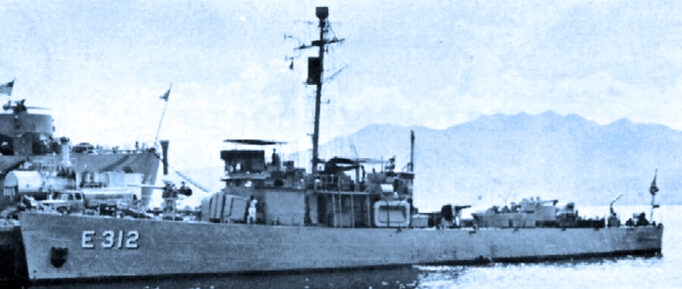
RPS Negros Oriental (PS-26) was formerly Khmer Navy E-312 which escaped to the Philippines in April/May 1975.
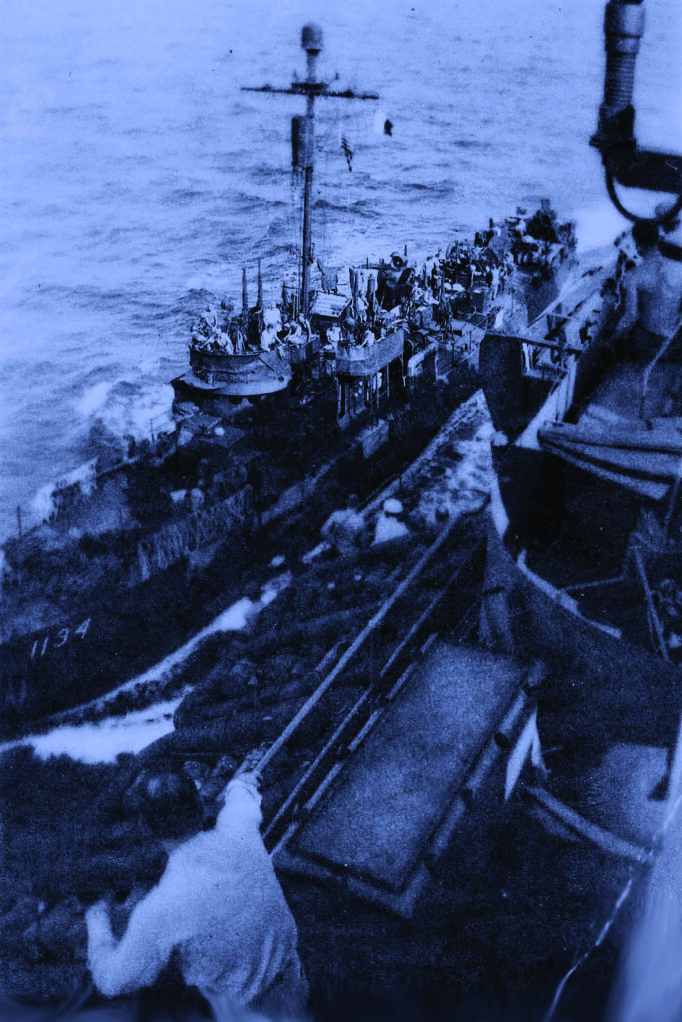
RPS Batangas (PS-24) was formerly USS PC-1134.Photo Credit: Navsource.
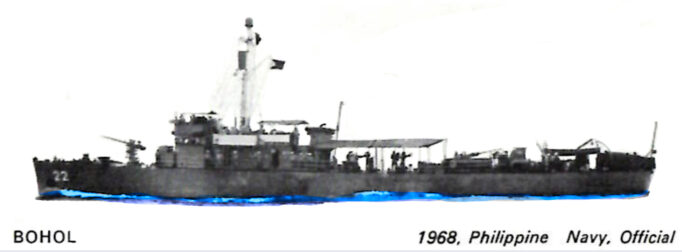
RPS Bohol (PS-22) was formerly USS PC-1131.
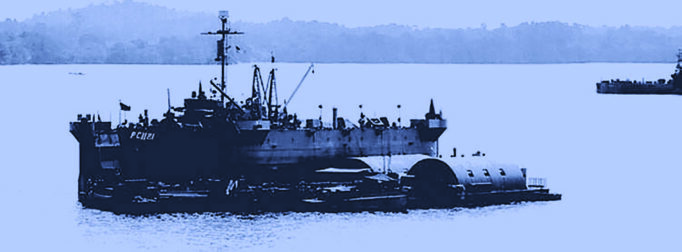
RPS Camarines Sur (PS-21) was formerly USS PC-1121. Photo Credit: Navsource.
SOURCES
- Guide to Far Eastern Navies: China, Japan, North Korea, South Korea, Philippines, Taiwan by Barry M. Blechman and Robert P. Berman, 1977.
- Janes Fighting Ships 1977-1978 by Captain Richard Moore, RN, 1978.
- History of the Philippine Navy by CAPT Aquilino Silverio PN (GSC) and LT Isidro G Espela PN, HPN, 1976.
- The Philippine Navy 1898-1998 By Commodore Regino P Giagonia AFP (RES).
- The Philippine Navy in the New Society, 1973.
- Conway’s All the World’s Fighting Ships 1947-1995 by Antony Preston, 1995.
About the Author
AUX CDR Mark R Condeno PCG is the On-Site Officer in Charge of the Philippine-Korea Friendship Center and Museum Curator of the PEFTOK Korean War Memorial Hall, Department of National Defense-Philippine Veterans Affairs Office. He holds a BS degree in Architecture from Palawan State University. He completed the Basic Naval Reserve Officers Training Course with the 420TH NROTCU. He is with Bravo Class of 1999 the Philippine Coast Guard Auxiliary Officers Indoctrination Course, Coast Guard District-Palawan. In 2002, he took the Aerospace Power Course from Air University, United States Air Force and is a 2008 Graduate of the Joint US Military Historical Operations Course. In 2007, he was Research Officer at the Office of the Naval Historian, PN. Lastly, he is with Class 26 of the Executive Course on National Security of the National Defense College of the Philippines.
